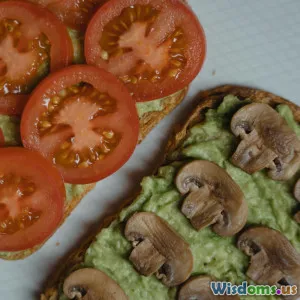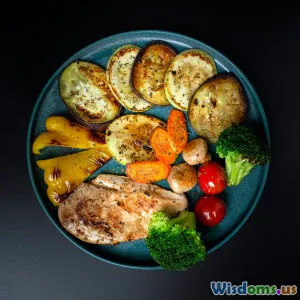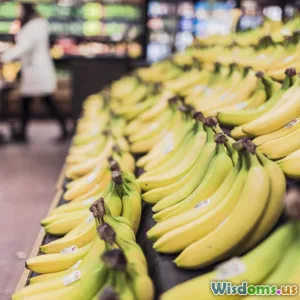
Smart Grocery Shopping Habits for Healthier Weekly Meals
17 min read Discover effective strategies to shop smart, save money, and plan healthier meals each week for balanced nutrition. (0 Reviews)
Smart Grocery Shopping Habits for Healthier Weekly Meals
When it comes to shaping our health, the choices we make in the grocery aisles have a profound impact. Food is central to our well-being, energy, and even mental focus—yet, navigating crowded supermarkets and dazzling stashes of processed options isn’t always easy. Instead of seeing grocery shopping as a chore, what if it became an empowering part of your week? Employing a thoughtful approach helps you fill your cart—and body—with wholesome goodness. Let’s break down the most effective habits, strategies, and science-backed insights for shopping smarter and savoring healthier weekly meals.
Plan Your Meals Before You Shop

The foundation of smart shopping lies in planning. Not only does this reduce waste and unnecessary purchases, but structured planning also means healthier, balanced dishes on your plate.
Benefits:
- Reduces impulse buys by giving your trip intention
- Saves time during the week by minimizing trips or last-minute decisions
- Helps keep spending in check, as you target only what’s needed
- Supports nutritional variety, avoiding repetitive or unbalanced meals
How-To Steps:
- Check your calendar. Consider social events or nights out when planning.
- Build a master list of favorite recipes. Rotate through nutritious staples and try new ones as you go.
- Balance food groups. Aim for proteins, complex carbs, fiber-rich veggies, and healthy fats within your weekly menu.
- Audit your fridge and pantry first. Prevent buying doubles or letting produce go bad.
- Draft your shopping list while meal-planning. Organize it by category—produce, frozen foods, dairy, etc.—to swiftly glide through the store.
Example: If you make a veggie-heavy sheet pan dinner on Monday, a chicken quinoa salad on Tuesday, and finish the week with a DIY burrito bowl, you’ll end up with diverse ingredients and flavor profiles, keeping your taste buds happy and your nutrition in check.
Shop the Perimeter for Freshness

Supermarkets are intentionally mapped out. Softer lighting, more colors, and the freshest, healthiest items—produce, dairy, proteins—tend to be on the perimeter or outer edges of the store. The center aisles, in contrast, are more likely to stock ultra-processed, shelf-stable foods packed with sugar, salt, and additives.
Smart Shopping on the Edge:
- Produce: Stock up on a wide color spectrum. Each color group (think: purple cabbage, orange carrots, green spinach) delivers different essential nutrients.
- Proteins: Look for lean meats, fish, eggs, dairy, and plant-based alternatives here.
- Whole Grains and Refrigerated Foods: Seek out whole, less-processed products that offer more fiber and fewer unpronounceable ingredients.
Quick Tip: Start your trip along the store’s perimeter, filling your basket with the items most crucial for health. Only revisit inner aisles for specific essentials—like oats, legumes, or olive oil.
Factual Insight: According to a 2021 CDC report, adults who increased their fruit and veggie intake lowered their risk for chronic diseases by up to 30%, highlighting why that outer ring deserves your focus.
Decode Labels with a Critical Eye

Modern packaging is full of buzzwords like “natural,” “low-fat,” or “immune-boosting,” which can mislead the unwary shopper. To truly buy smart, you need to dive deeper than the front-of-box marketing and investigate the details.
How to Read Like a Pro:
- Start with the ingredient list. If you can’t pronounce half the items or see a long list of additives at the top, it’s best to walk away.
- Check for added sugars and sodium. Often hidden—even in foods that don’t taste sweet or salty—these can add up fast. The American Heart Association recommends no more than 25g (6 tsp) of added sugars for women and 36g (9 tsp) for men daily.
- Look for fiber and protein. Foods richer in these will leave you fuller, longer.
- Serving sizes matter. Packages may look small but contain multiple servings.
Comparison Example: Two similar-looking yogurts:
- Yogurt A: 4g added sugar, 0 artificial flavors, 13g protein, simple ingredients (milk, cultures, fruit).
- Yogurt B: 15g added sugar, thickeners, artificial flavors, only 5g protein. Going for Yogurt A supports your goal of eating cleaner, feeling satisfied, and controlling empty calorie intake.
Master the Art of Bulk and Batch Buying

A well-stocked kitchen promotes better meal choices—especially on hectic days. Smart grocery shoppers harness the benefits of buying versatile staples in large formats (think: legumes, rice, oats, frozen vegetables, and healthy oils), which saves both time and money.
Why Buy in Bulk?
- Saves money per serving (stores like Costco, local co-ops, or bulk bins help here)
- Minimizes packaging waste—more eco-conscious
- Reduces frequency of store trips
- Empowers improvisation when plans shift or cravings arise
Batch-Cooking Benefits: On Sunday, prep grains, roast veggies, and grill or bake proteins. Portion these for grab-and-go lunches and fast dinners. Mason jars or airtight containers extend freshness and ease meal assembly (e.g., whole-grain salads, hearty soups, or meals-in-a-bowl).
Quality over Quantity: Still opt for whole forms—brown instead of instant white rice, dried beans over cans for less salt, and frozen berries with no syrups. Bulk buying doesn’t mean compromising health!
Embrace Seasonality for Flavor and Value

Shopping seasonally is one of the most rewarding habits. Not only does it connect you with local agriculture (reducing your food’s carbon footprint), but it also often assures better taste and lower prices.
Spotlight: Why Seasonal Matters
- Peak Flavor: Fruits and vegetables are harvested at the right ripeness point—think of that vine-ripened summer tomato versus a hothouse winter tomato.
- Food Miles: Seasonal means less travel—produce spends less time in transit, retaining nutrients and taste.
- Affordability: Local bounty comes down in price as supply surges, while imported off-season foods often cost more.
How To Spot What’s In-Season:
- Many grocers label with “local” or call out peak produce, especially for berries, greens, and root veggies.
- Notice droves of a certain fruit or veg? That’s often a sign it’s in season.
- Consult simple seasonal produce charts available online, or download CSA (community supported agriculture) guides for your region.
Recipe Example: In late summer, fill your cart (or basket at farmer’s markets) with zucchini, tomatoes, and basil—then turn them into caponata or a quick skillet sauté. Winter? Root for beets, squash, and hearty greens for soups or gratins.
Make a Mindful Approach to Processed Foods
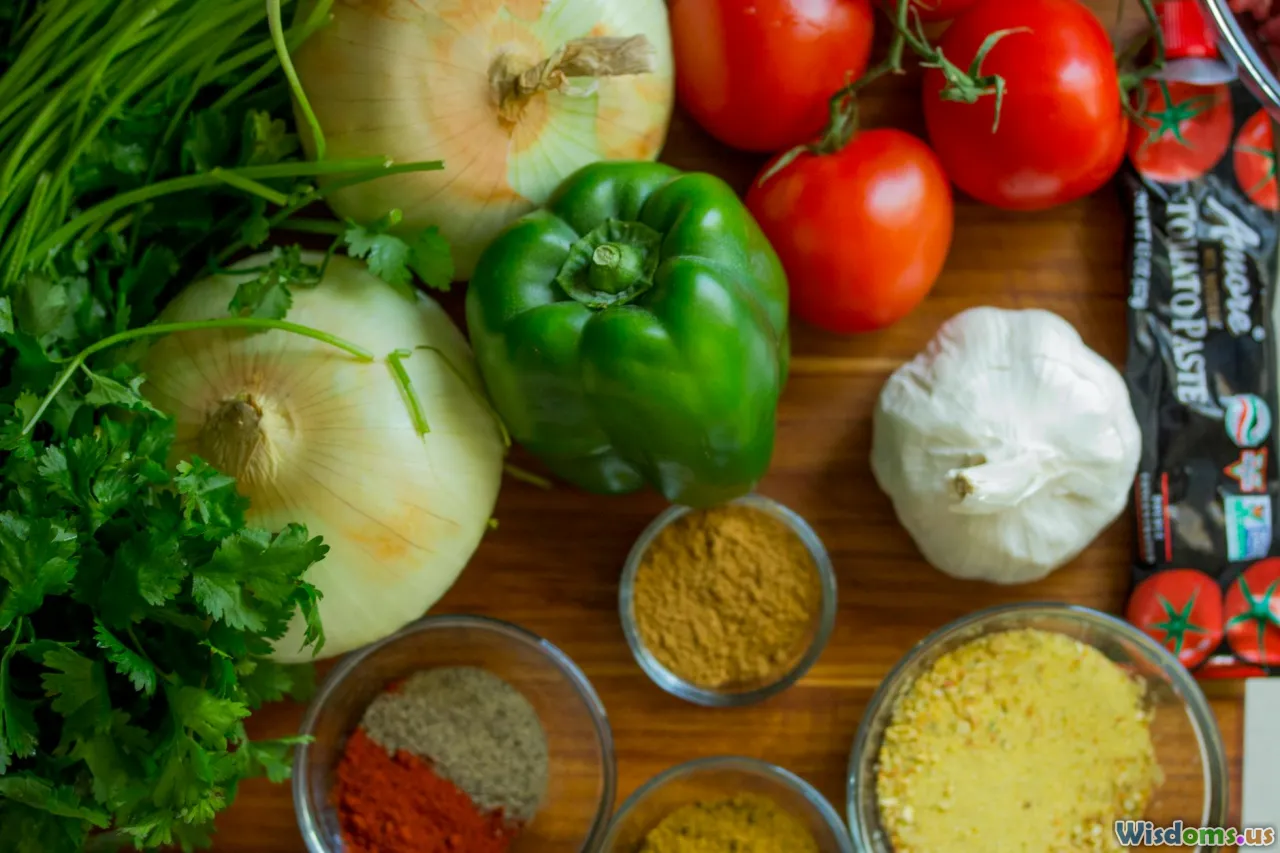
Unprocessed doesn’t mean unachievable—real life gets busy, and not all convenience foods are bad. It’s about choosing well.
When to Say Yes:
- Frozen veggies and fruits without sauces or added sugars often hold more nutrients than “fresh” options shipped thousands of miles. Flash-frozen soon after harvest, their vitamins are locked in.
- Canned beans or tomatoes: Handy, affordable, and quick. Rinse beans to remove up to 40% of sodium.
- Nut butters and whole grain breads with simple, short ingredient lists count as healthy processed choices.
When to Use Caution:
- Packaged foods with long ingredient lists, especially those featuring high-fructose corn syrup, artificial colorings, or hydrogenated oils
- Flavored instant products (mac and cheese, processed breakfast cereals, etc.)
- Pre-packaged snack foods: They’re tempting, especially with flashy claims, but often hide excess sugar, sodium, and unhealthy fats
Pro Tip: Keep a rule—for example, “Nothing with more than five ingredients I don’t recognize.”
Develop a Savvy List of Reliable Staples
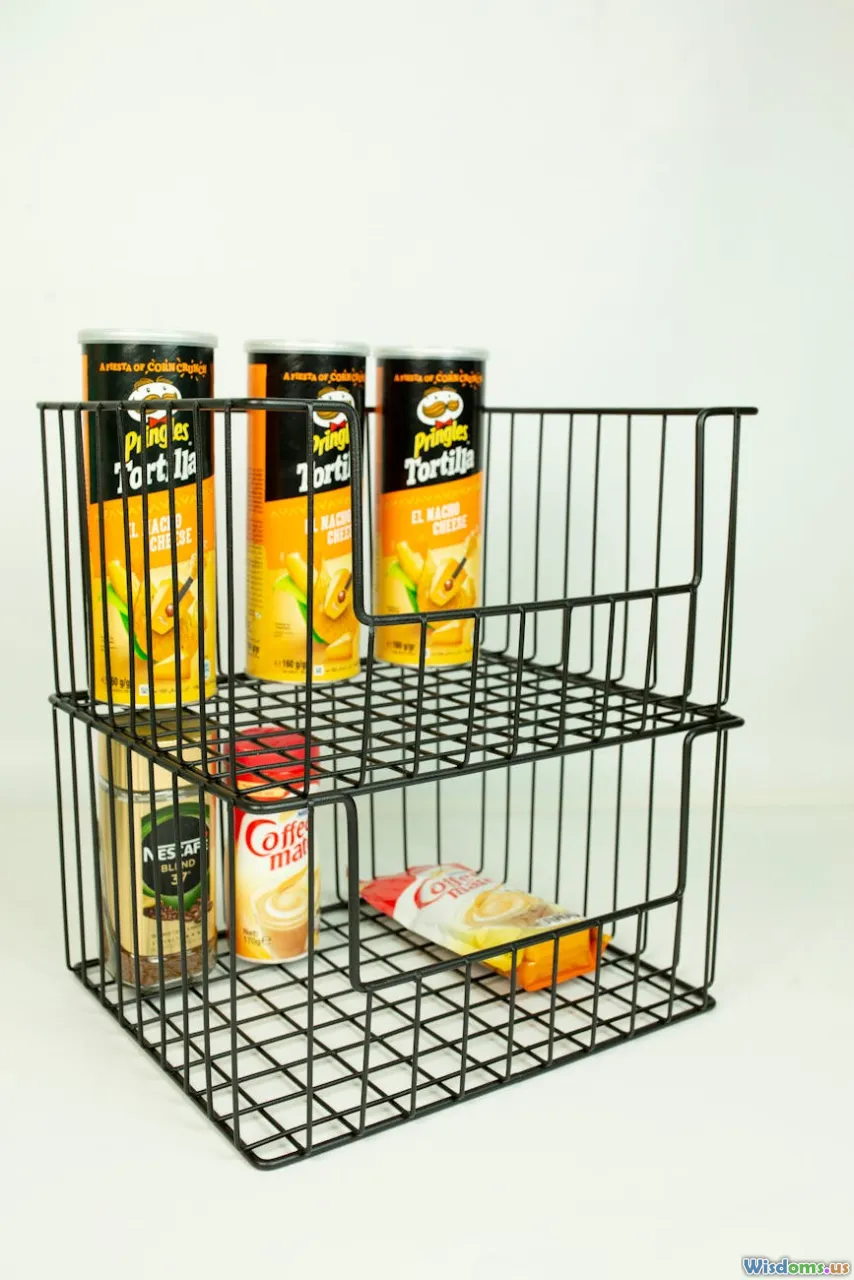
A well-curated pantry supports healthier choices, fosters creativity, and aids in last-minute meal assembly.
Suggested Staples:
- Whole grains: Brown rice, oats, quinoa, barley, or bulgur
- Canned legumes: Black beans, chickpeas, lentils (rinse to reduce sodium)
- Healthy fats: Extra virgin olive oil, avocado oil, raw nuts, and seeds
- Flavor-builders: Low-sodium broths, tomato paste, mustard, dried herbs and spices
- Long-lasting produce: Onions, garlic, carrots, sweet potatoes
These items can rescue dinner after a long day (try sautéed beans and greens over grains, or quick stir-frys with pantry and freezer staples).
Pro Advice: Every month, take 10 minutes to check dates and reorganize, moving older or nearing-expiry buys to the front. Keeping things visible prevents both spoilage and those last-minute ‘what’s for dinner?’ panics.
Harness Technology: Apps and Digital Tools for Efficiency

Embracing digital aids can revolutionize tight schedules or complex nutrition needs. Today’s smartphones hold powerful tools to streamline your healthy shopping mission.
Top Apps & Features:
- Meal planners: Apps like Paprika or Mealime allow you to drag-and-drop recipes and generate an instant, categorized shopping list from your selections.
- Barcode scanners: Yuka or Fooducate reveal nutrition grades, allergens, and hidden ingredients instantly at the shelf.
- Budgeting helpers: Tools like EveryDollar or grocery-store loyalty apps track what you spend and alert you to markdowns on your favorite healthy items.
- Inventory managers: Sortly or Pantry Check can help households reduce food waste by logging expiry dates and what’s on hand, making meal planning more efficient.
Tips for Digital Success:
- Sync lists with family or housemates—no more double buys, and everybody has input in healthy choices.
- Use grocery delivery and pre-order options if time or transport is tough, but avoid letting these convenience services tempt you into quick, less healthy add-ons.
Shopping with Kids or Family: Build Healthy Habits Together

Bringing kids—or even sometimes skeptical adults—into the grocery planning and shopping process can foster lifelong healthy habits.
Actionable Family Strategies:
- Involve everyone in meal planning. Let children pick a new vegetable or fruit to try each week. Rotate “chef nights” to keep interest high.
- Educate on label reading. Make choosing breakfast cereals a learning moment: which box has the most fiber, the least sugar? Have a contest.
- Smart incentives. Create a healthy shopping checklist—each checked box earns a small treat at week’s end (healthy 'desserts,' extra screen time, or picking the weekend activity!).
- Demonstrate balance. It’s fine to get an ice cream or sweet now and then, but show that these are special—not daily—choices. Kids mirror adult attitudes to moderation.
Example: Instead of negotiating for chips or soda, redirect your child’s excitement: “Let’s pick out something crunchy for snacks—how about roasted chickpeas, or air-popped popcorn with a sprinkle of cheese?”
Bonus Effect: Studies show that families who plan meals and shop together enjoy both better nutrition and stronger interpersonal communication at home.
Reduce Food Waste and Boost Nutrition Value

A mindful grocery approach extends beyond the shopping cart—into preserving what you purchased, minimizing what you throw away, and making the most of every bite.
Waste-Reduction Tactics:
- Store fresh produce smarter: Learn which veggies need the fridge, which do best on the counter (potatoes, onions)—or in breathable produce bags
- First-in, First-out: When unloading groceries, bring older items to the front of the fridge/pantry
- Love your leftovers: Reimagine roast chicken into tacos or grain bowls; revive stale bread for croutons or breadcrumbs
- Compost: What you can’t eat, return to the earth when possible. Many cities now supply compost bins, reducing landfill and emissions
Nutrient Maximizing:
- Save stems and scraps for broth
- Use the entire vegetable (beet greens can be sautéed like spinach; broccoli stems make delicious slaws)
Impact Stats: The USDA estimates over 30% of food bought in the U.S. is wasted—mostly at the household level! Smarter grocery habits mean more money in your pocket, less environmental strain, and healthy experimentation with skills in the kitchen.
Shopping smart doesn’t just change your meals—it fuels your routines, your relationships, and the planet’s health. Adopt a few of these practical habits on your next trip: Take control of your grocery haul, savor the delicious variety you bring home, and build healthy routines that last far longer than a single week.
Rate the Post
User Reviews
Other posts in Health & Wellness
Popular Posts











